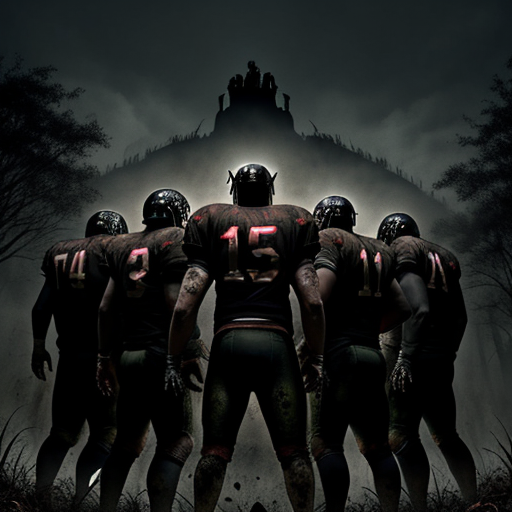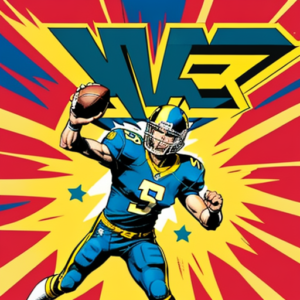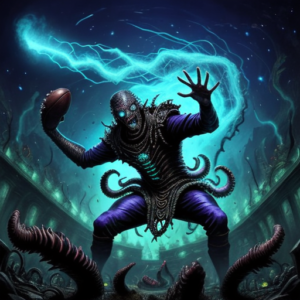The Week 5 slate features several excellent spots for offense with both-sided opportunities in several games making ideal stack and run-back situations. The prime targets are a 53-point game between the Chiefs and Vikings that should be highly played around the NFL DFS industry, the Eagles and Rams in a 50-point game that sits second on the board and is also pulling just a 4-point spread in favor of Philadelphia on the road in what should be a pass-happy game, and the Dolphins with a large implied total against a low-end Giants team. Throw in the Lions, and Bengals as fairly high-end options from games with 44.5 and 44-point totals, as well as the opposing teams at least in the case of the Arizona Cardinals, who will line up opposite the Bengals, and we have a wide range of options at a variety of price points. There are several very popular options in the skill player pool, some more deserving of adoration and ownership than others, though the extreme value plays provided on DraftKings are difficult to ignore on this slate.
This article focuses on building lineups with a quality foundation by utilizing the powerful Groups and Rules/Limits tools within the industry’s optimization tools. All of the concepts and pairings included below can be applied to hand-building as well. The goal is to create lineups that have high-scoring correlation and take advantage of combined outcomes within stacks while limiting the likelihood of building inefficient or negatively correlated entries for a full slate of NFL DFS lineups.
This video was made in a former life and features a detailed demonstration of how to apply these concepts in one leading optimizer tool: Fantasy Cruncher – How-To Video
Don’t miss the new Above/Below feature article for a few of our top picks
Join us on YouTube for the full game-by-game breakdown:
Week 5 DraftKings & FanDuel NFL DFS Stack Rankings
The following stack rankings were created by pairing each team quarterback with his top three scoring options, whether they are three wide receivers, two wide receivers and a tight end, a wide receiver, tight end, and running back, or any viable combination. In some cases, an expensive running back, such as Tony Pollard, can push the overall price point of his team stack in the value rankings.
| TEAM | OPP | FD$ | FDpRank | FDvalRank | DK$ | DkpRank | DKvalRank |
|---|---|---|---|---|---|---|---|
| HOU | JAC | $30,500 | 1 | 1 | $27,600 | 1 | 4 |
| CIN | CAR | $31,300 | 2 | 8 | $26,100 | 2 | 3 |
| ARI | WAS | $29,700 | 3 | 3 | $25,000 | 3 | 1 |
| PHI | TB | $31,600 | 4 | 16 | $25,300 | 5 | 5 |
| SF | NE | $31,600 | 5 | 17 | $26,200 | 6 | 12 |
| MIN | GB | $30,100 | 6 | 12 | $25,900 | 4 | 7 |
| BAL | BUF | $30,000 | 7 | 14 | $0 | 0 | 0 |
| NYJ | DEN | $28,800 | 8 | 5 | $25,200 | 7 | 6 |
| BUF | BAL | $29,100 | 9 | 6 | $0 | 0 | 0 |
| KC | LAC | $29,000 | 10 | 7 | $25,600 | 9 | 14 |
| NO | ATL | $29,200 | 11 | 11 | $25,500 | 8 | 10 |
| WAS | ARI | $26,900 | 12 | 4 | $22,200 | 13 | 2 |
| GB | MIN | $26,200 | 13 | 2 | $23,600 | 12 | 8 |
| TB | PHI | $28,900 | 14 | 19 | $26,200 | 10 | 19 |
| ATL | NO | $27,700 | 15 | 15 | $23,800 | 11 | 9 |
| CLE | LV | $25,400 | 16 | 10 | $22,600 | 16 | 13 |
| IND | PIT | $27,100 | 17 | 21 | $24,400 | 15 | 20 |
| JAC | HOU | $25,500 | 18 | 13 | $23,300 | 14 | 16 |
| CHI | LAR | $26,200 | 19 | 20 | $23,600 | 17 | 18 |
| LAR | CHI | $26,100 | 20 | 23 | $22,800 | 20 | 22 |
| LV | CLE | $23,900 | 21 | 9 | $21,600 | 18 | 15 |
| PIT | IND | $24,500 | 22 | 18 | $20,700 | 19 | 11 |
| CAR | CIN | $24,900 | 23 | 22 | $21,400 | 21 | 17 |
| LAC | KC | $25,700 | 24 | 26 | $21,500 | 22 | 24 |
| DEN | NYJ | $22,800 | 25 | 24 | $19,900 | 23 | 21 |
| NE | SF | $23,600 | 26 | 25 | $19,900 | 24 | 23 |
Week 5 DraftKings & FanDuel NFL DFS Stacks & Optimizer Groups – Coming Saturday Morning
Overview
Rules and limits are powerful tools for lineup creation for NFL DFS where our primary focus is creating highly correlated lineups via stacking players from the same game. Lineups will typically be coordinated around the quarterback selection, which informs at least one pass-catcher choice, establishes a budget, eliminates a defense, and sets the tone for the lineup. We will typically look to correlate a quarterback and at least one of his pass-catchers in every lineup, with most of those including a skill player from the opposing team who will have a chance to support the stack in a high-scoring game that drives offense on both sides to create additional correlated scoring potential. Stacking multiple pass-catchers in the same lineup is a sound approach as well, though there are typically overall ceilings on how much volume is available at any given position. We do not typically include running backs who are not pass-catchers as priorities in NFL DFS groups, they typically stand alone with the selection of the quarterback-based stack informing remaining salary which then informs the running back selections. High-volume backs and pass catchers out of the backfield can be included in the groups utilized below, but it is frequently not necessary to do so with the very best players, they arrive in lineups without help.
The following rules and limits are typically applied in an optimizer’s Advanced Options menu. Notes are included to elucidate the reasons behind each rule and to explain what it does during the lineup creation process. These settings can typically be saved for re-use, which is highly recommended. Saving the Week 1 groups that will be created below is also a very good idea to save time with updates instead of recreation each week. These groups are created manually, but most optimizers include automated group creators that can help accelerate the curation process.
DraftKings + FanDuel Settings & Advanced Options
Unique Players Per Lineup– This setting forces the optimizer to utilize at least X new players who were not in Lineup 1 when it creates Lineup 2, and so on. It is recommended to utilize at least two, and more can be applied depending on the degree of differentiation desired within lineups.
Team Salary– a minimum or maximum salary spend can be applied here as needed, though this is not a part of the recommended process in this space as leaving salary on the table is an easy path toward creating unique lineups while not necessarily making a negative expected value play.
FLEX position– allows restrictions on what positions can be rostered at the FLEX spot. The only position to consider in this case is tight end, but that is something to be restricted at the individual level via Groups, rather than at the global level.
Global Exposure Setting – allows caps on the maximum percentage of lineups a player can appear in within a given pool of lineup construction. This is a powerful tool for shaping lineups but if settings are too low attempts to build a full set will fall short due to a lack of available players, one of the most common errors in optimizer building. Most optimizers include the ability to calculate ownership caps continuously or at the end of the pool creation process. If caps are calculated continuously, a player with a 25% cap who is utilized in Lineup 1 will not be available for use again until Lineup 5 , we recommend turning OFF continuous calculation.
Randomness – provides a random multiplier to each player’s projected point total based on the set values. This is a valuable tool that helps differentiate lineups instead of simply creating them in order of highest median projected scores. Using some randomness for lineup generation is strongly recommended but the degree to which it is applied is down to personal preference, but 15-25% is fine to get started. We suggest heavier randomness to more event-based players like wide receivers while tracking volume-based positions like running backs more toward their median or ceiling projections.
DraftKings + FanDuel Team Stack Rules
This set of rules will force optimizers to build lineups with certain combinations. We are looking to stack at least one skill player, almost always a pass-catcher, with his quarterback while also playing a skill player from the opposing team in the lineup. The theory behind this build is that a high-scoring stack will require some response from the opposing team to deliver a ceiling score in most situations. When that is not the case, the team that is winning will simply slow down and run out the clock. Most optimizers utilize a “complete the sentence” approach for rule creation with selections from drop-down menus following a very straightforward logic. Exceptions to these rules can be added for specific teams and players on most optimizer products.
- QB with at least one WR/TE from Same Team (note: It is fine to set this to two or to utilize two versions of this rule, one with WR/TE and one with RB/WR/TE, but we refine this via Groups)
- QB with at least one RB/WR/TE from the Opposing Team (we typically prefer the pass-catchers but high-volume running backs can be effective here)
- QB with at most zero DST from the Same Team (this is a personal preference; high-scoring teams and quarterbacks tend to leave their defenses on the field, exposing them to simple point-scoring negatives)
Limits & Custom Rules and Requirements
Limit rules can be applied to restrict certain combinations from coming together. This is powerful for limiting multiple running backs from the same team or getting overweight to a certain stack within a lineup.
- Limit QB/RB/WR/TE from Same Team to three
- Limit RB/WR/TE from the Same Team to one unless paired with QB from the Same Team OR the Opposing Team
- Limit RB from Same Team to one (we also do this with WR in a separate rule that adds an “unless paired with QB or opposing QB” but it’s a personal preference for NFL DFS, we typically do not want two pass-catchers from the same team without their quarterback)
We will maintain the list of rules and limits throughout the season, with occasional tweaks, if needed. Each week sees yet another fresh crop of value plays as situations change and injuries create opportunities around the league. These changing roles and emergent value plays are accounted for in the process of creating these groups from week to week. After a large pool of lineups is created utilizing these groups, it is still of critical importance to filter them for factors including ceiling projections and leverage potential. These groups should help ensure that a highly correlated premium set of options that rotates through a variety of combinations is utilized to create the full lineup pool.
Sunday Updates
Any changes and recommended boosts to specific players will be provided in an early morning update each Sunday.
NFL DFS Week 5 Features & FREE Projections
- Week 5 FanDuel & DraftKings Projections – FREE
- Week 5 Above/Below – Key Picks
- Week 5 Quarterback Scoring & Value Rankings
- Week 5 Running Back Scoring & Value Rankings
- Week 5 Pass-Catcher Scoring & Value Rankings
- Week 5 Defense Scoring & Value Rankings
Construction Concept
Team groups are built by utilizing the quarterback as the KEY player in group settings. The quarterback decision in each lineup is the driving factor in which stack is utilized in that lineup and which corresponding plays are then made to work within the structure and requirements. Built to specification, each team will have two groups, a team group, and an opponent group, both of which utilize the same quarterback as the key player. Each game will have a total of four groups. This is the best approach to truly capture the requirement of playing individual “run-back” plays from the opposing team. A more basic approach would be to include all of the skill players from a game in each quarterback’s group and rely on rules and limits to restrict any potential overflow. It is highly recommended to save the Week 1 groups as a foundation that will be updated for the rest of the season. The recommended groups will include skill players who have an active role in their offense and provide significant correlation with their quarterback’s scoring, often bell-cow running backs who do not specialize in the passing game will not be included in groups as they are projected highly and appear on their own in basically correct distributions, while also not always providing the strongest positive correlation plays. Stacking quarterbacks with pass-catchers and allowing running backs to fall into the lanes then created by settings, available salary, and randomness should create a well-distributed set of quality lineups. These groups are updated weekly to account for changes in utilization, schemes, injuries, target shares, and more.
Team Groups for DraftKings & FanDuel – Week 5
The goal is to create a large pool of well-built lineups that can be utilized in any large-field GPP contest. Our approach is to build far more lineups than needed and utilize a sorting table or sim process to filter to the best set of lineups for entries. The lineups created in these crunches should provide a broad distribution that includes some of the lower-owned high-upside skill players from each stack. Applying boosts is critical in pushing and pulling ownership to individual players within their team’s stacked lineups if they are appearing too much or too little.
The groups below are designed so that each quarterback will have two groups to create, one with his skill players and another with the opposing team. A more basic approach would be to add them all to one large group with an “at least three” and let rules and limits set things, but there is a more granular level of control in creating them separately.
Utilizing two groups also allows us to place running backs into the “run-back” position in certain teams while not including them in the primary stack for their team. This is useful when there is a situation with an extremely highly projected running back who does not necessarily fit into his team’s passing game. These players are threaded throughout the following construction recommendations.
Note for the Rotogrinders optimizer, we recommend trimming the automatically created groups that can be accessed under Team Groups, Opponent Groups, and Max Position Groups to match these groups for lineup building. We typically utilize the Stacks tab to enforce constructions as well, but a key requirement is missed in the automated groups. The Max Position groups need the manual addition of the running backs and tight ends to the group that is created with the wide receivers with a setting of max 1 and the team’s quarterback selected as a key player with the designation of using that group when the quarterback is NOT in the lineup. This is done to eliminate the possibility of three skill players from the same team appearing at running back, tight end, and wide receiver together without their quarterback involved. A simple limit of three players per team will keep things to just a quarterback with two skill players in stacks after that. Update: if one were to reset their saved settings on RG’s optimizer new options will reveal themselves, including thankfully a toggle to take care of this from the main build rules page. There is also a non-QB group with a max-1 setting that works better for this purpose because the toggle on the main page will limit stacks to just a 1-1 combination, seemingly as a bug.
Arizona Cardinals
Key Player: Joshua Dobbs
Setting: at least one
Team Group: Marquise Brown, James Conner, Michael Wilson, Zach Ertz, Rondale Moore
Opposing Setting: at most one
Opposing Group: Ja’Marr Chase, Joe Mixon, Tyler Boyd, Irv Smith Jr., Trenton Irwin
Lineup Notes: James Conner should see enough action in the passing game to stay in groups, our model leans into the Arizona stack to some degree this week, they have appeal both as a primary stack and with good skill players to use as run-back options in stacks of Bengals on the other side. Cincinnati will be without Tee Higgins, their second option at wide receiver, which should create downstream opportunities for Tyler Boyd and Trenton Irwin. We are including
Atlanta Falcons
Key Player: Desmond Ridder
Setting: exactly one
Team Group: Bijan Robinson, Drake London, Kyle Pitts, Jonnu Smith, Mack Hollins (large field)
Opposing Setting: at most one
Opposing Group: Nico Collins, Tank Dell, Robert Woods, Dalton Schultz
Lineup Notes: the Falcons stack is limited by the play of their quarterback, we are VERY high on Bijan Robinson as an individual play or in stacks this week. Jonnu Smith is eating into the opportunity for Kyle Pitts in addition to the quarterback limitation. The Texans are a frisky option for run-back plays with all of Collins, Dell, and Woods drawing fair target shares.
Baltimore Ravens
Key Player: Lamar Jackson
Setting: at most two
Team Group: Zay Flowers, Mark Andrews, Odell Beckham Jr. (Q), Rashod Bateman
Opposing Setting: at most one
Opposing Group: George Pickens, Calvin Austin III, Allen Robinson II, Jaylen Warren, Najee Harris
Lineup Notes:
Carolina Panthers
Key Player: Bryce Young
Setting: exactly one
Team Group: Adam Thielen, DJ Chark, Jonathan Mingo, Hayden Hurst
Opposing Setting: exactly one
Opposing Group: David Montgomery, Sam LaPorta, Josh Reynolds, Jameson Williams (Q), Kalif Raymond
Lineup Notes: the Panthers’ passing game is somewhat limited, they make for better run-back options in stacks of Lions. Jonathan Mingo is off the injury report and expected to be fully back in action this week. On the Detroit side, both Amon-Ra St. Brown and Jahmyr Gibbs are expected to be OUT.
Cincinnati Bengals
Key Player: Joe Burrow
Setting: at least one
Team Group: Ja’Marr Chase, Joe Mixon, Tyler Boyd, Irv Smith Jr.
Opposing Setting: at most one
Opposing Group: Marquise Brown, James Conner, Michael Wilson, Zach Ertz, Rondale Moore
Lineup Notes: Cincinnati will be without Tee Higgins, their second option at wide receiver, which should create downstream opportunities for Tyler Boyd and Trenton Irwin. We are including Andrei Iosivas as a large-field-only option in Cincinnati stacks but not as a run-back, as he is likely to only run 10-12 routes if he sees an uptick at all.
Denver Broncos
Key Player: Russell Wilson
Setting: at least one
Team Group: Courtland Sutton, Jerry Jeudy, Marvin Mims Jr.
Opposing Setting: at most one
Opposing Group: Garrett Wilson, Breece Hall, Allen Lazard
Lineup Notes: we are leaving the ground game aside in Denver builds, Javonte Williams seems likely to suit up but is questionable with an injury, Samaje Perine out-snapped popular season-long pickup and last week’s standout Jameel McLaughlin with a 60% rate in the second half last week but the diminutive rookie was the one who delivered fantasy points. The murky situation is simply low priority against a decent rush defense. The Jets are a limited run-back option that gains ground the more one chooses to believe in Zach Wilson, we will not have much at all.
Detroit Lions
Key Player: Jared Goff
Setting: at least one
Team Group: David Montgomery, Sam LaPorta, Josh Reynolds, Jameson Williams, Kalif Raymond, Marvin Jones Jr. (large field)
Opposing Setting: at most one
Opposing Group: Adam Thielen, DJ Chark, Jonathan Mingo, Hayden Hurst
Lineup Notes: Both Amon-Ra St. Brown and Jahmyr Gibbs are expected to miss Week 5 and are no longer in projections. Jameson Williams should play and should be expected to step into at least a limited role, Kalif Raymond will see an uptick in potential routes and target share, while Marvin Jones Jr. remains a talent-deficient large field dart throw.
Houston Texans
Key Player: CJ Stroud
Setting: at least one
Team Group: Nico Collins, Tank Dell, Robert Woods, Dalton Schultz
Opposing Setting: at most one
Opposing Group: Bijan Robinson, Drake London, Kyle Pitts, Jonnu Smith, Mack Hollins
Lineup Notes:
Indianapolis Colts
Key Player: Anthony Richardson
Setting: at most one
Team Group: Michael Pittman, Josh Downs, Alec Pierce
Opposing Setting: at most one
Opposing Group: DeAndre Hopkins, Derrick Henry, Nick Westbrook-Ikhine, Chig Okonkwo
Lineup Notes: The Titans have been a pass-funnel defense to this point in the season, their run defense is very good. There should be opportunities for quarterback Anthony Richardson through the air, but his skillset has primarily been on display on the ground to this point in the season, he may choose to run the ball in on his own, limiting the upside of playing multiple skill players alongside him in stacks. The Titans will be without Treylon Burks, who has been removed, and their passing attack has been limited this season. Nick Westbrook-Ikhine is the realistic option to step into additional targets at the wide receiver position while Chris Moore is a downfield dart throw. DeAndre Hopkins and Derrick Henry gain value with Burks out.
Kansas City Chiefs
Key Player: Patrick Mahomes
Setting: at least one
Team Group: Travis Kelce, Isiah Pacheco, Rashee Rice, Skyy Moore, Marquez Valdes-Scantling, Kadarius Toney, Justin Watson (large field)
Opposing Setting: exactly one OR at most one (we recommend a rotation of both settings across a large pool of lineups, using the “exactly” will guarantee lineups with run-back plays while “at most” will just allow it to happen)
Opposing Group: Justin Jefferson, TJ Hockenson, Jordan Addison, KJ Osborn
Lineup Notes: Chiefs’ running back Isiah Pacheco should be fairly popular, if he is coming up too frequently in stacks he can be removed in some or all runs of this group. The Chiefs distribute the ball far and wide when it comes to options not named Travis Kelce, the star tight end is a must-play in many stacks with Mahomes. There is developing chemistry between Mahomes and Rashee Rice at wide receiver, while options including Marquez Valdes-Scantling, Kadarius Toney, and Justin Watson are more downfield dart-throw options with limited target shares and hit-or-miss opportunities. These teams are ideal to match up back and forth in stacks on either side.
Los Angeles Rams
Key Player: Matthew Stafford
Setting: exactly one
Team Group: Cooper Kupp, Puka Nacua, Tutu Atwell, Tyler Higbee, Van Jefferson (large field)
Opposing Setting: exactly one OR at most one (we recommend a rotation of both settings across a large pool of lineups, using the “exactly” will guarantee lineups with run-back plays while “at most” will just allow it to happen)
Opposing Group: AJ Brown, DeVonta Smith, Dallas Goedert, D’Andre Swift, Quez Watkins
Lineup Notes: Kupp is expected to play but his role is undefined, he projects very well, as does the entire Rams offense, the Eagles are ideal run-back options in Rams stacks. Atwell, Higbee, and Jefferson should see a ding, Kyren Williams has been removed from the group in a difficult matchup with an overwhelming number of viable pass-catchers, he should still arrive in lineups independently.
Miami Dolphins
Key Player: Tua Tagovailoa
Setting: at least one
Team Group: Tyreek Hill, Jaylen Waddle, De’Von Achane, Raheem Mostert, Durham Smythe
Opposing Setting: at most one
Opposing Group: Saquon Barkley (D), Darren Waller, Wan’Dale Robinson, Darius Slayton, Parris Campbell
Lineup Notes: Saquon Barkley is now expected to be OUT, his status will be updated again after the sun comes up. Achane took over with a roughly 60-40 backfield split with Mostert last week, but both have plenty of opportunity to get involved against the lousy Giants. WanDale Robinson will be extremely popular as a run-back in this stack when the play comes up, he is extremely cheap and has been targeted frequently in his two games, to mixed results. The Dolphins are a top priority stack, the Giants go along for the ride, they are enhanced if Saquon Barkley plays.
Minnesota Vikings
Key Player: Kirk Cousins
Setting: at least one
Team Group: Justin Jefferson, TJ Hockenson, Jordan Addison, KJ Osborn, Alexander Mattison
Opposing Setting: exactly one OR at most one (we recommend a rotation of both settings across a large pool of lineups, using the “exactly” will guarantee lineups with run-back plays while “at most” will just allow it to happen)
Opposing Group: Travis Kelce, Rashee Rice, Skyy Moore, Marquez Valdes-Scantling, Kadarius Toney
Lineup Notes: Alexander Mattison has been added to the Vikings group, he sees just enough volume in the passing game to support the inclusion, the Chiefs are an excellent run-back option, though the focal point of the offense is clearly Travis Kelce. We are leaving Isiah Pacheco out of the return-fire group of Chiefs but he can be added if he does not appear naturally frequently enough, he should be fairly popular this week.
New England Patriots
Key Player: Mac Jones
Setting: at least one
Team Group: Rhamondre Stevenson, DeVante Parker, Kendrick Bourne, JuJu Smith-Schuster, Hunter Henry
Opposing Setting: at most one
Opposing Group: Alvin Kamara, Chris Olave, Michael Thomas, Rashid Shaheed
Lineup Notes: the quality of the Saints’ run-back options may be limited by their quarterback’s ability to throw the ball downfield with his injured shoulder, Alvin Kamara was the beneficiary last week and caught a whopping 13 of 14 targets but was limited in his production on those touches beyond the receptions. The Patriots’ passing attack is limited against a very good Saints pass defense, this is a QB+1 spot on both sides, with run-backs loosely optional to irrelevant.
New Orleans Saints
Key Player: Derek Carr (Q)
Setting: exactly one
Team Group: Alvin Kamara, Chris Olave, Michael Thomas, Rashid Shaheed
Opposing Setting: at most one
Opposing Group: Rhamondre Stevenson, DeVante Parker, Kendrick Bourne, JuJu Smith-Schuster, Hunter Henry
Lineup Notes: Derek Carr was extremely limited in downfield throws last week, he is playing through shoulder pain and remains questionable on Sunday. Alvin Kamara saw 14 targets and caught 13 of them but was limited for yardage and did not score through the air despite the volume. Carr’s current deficiency hampers the upside of his talented wide receiver corps. Rhamondre Stevenson has not been good this season, but he should see volume with the Patriots’ passing attack much more limited against the capable Saints’ pass defense. New Orleans is an interesting DST option on both sites in this matchup. Stevenson is confirmed to be playing.
New York Giants
Key Player: Daniel Jones
Setting: at most two
Team Group: Saquon Barkley (D), Darren Waller, Wan’Dale Robinson, Darius Slayton, Parris Campbell, Jalin Hyatt (large field)
Opposing Setting: exactly one
Opposing Group: Tyreek Hill, Jaylen Waddle, De’Von Achane, Raheem Mostert, Durham Smythe
Lineup Notes: Saquon Barkley is now expected to be OUT, his status will be updated again after the sun comes up. The line swung 1.5 points in Miami’s direction between Friday and Saturday, with any glimmer of hope coming out of the projection for Daniel Jones as a result, he is a very limited quarterback with a bad offensive line, a banged-up star running back who remains a game-time decision, and a highly questionable cast of receivers. WanDale Robinson is likely to be very popular given a $3,000 price tag on the DraftKings slate in a game that features the high-octane Dolphins on the other side. They are a highly recommended run-back option in any stacks one may build of Giants, the hope is that Jones plays well enough to keep New York in the game into the 20-point range. Jalin Hyatt is a very limited option, he simply does not see the targets even when he runs routes.
New York Jets
Key Player: Zach Wilson
Setting: exactly one
Team Group: Garrett Wilson, Breece Hall, Allen Lazard, Tyler Conklin
Opposing Setting: at most one
Opposing Group: Jerry Jeudy, Courtland Sutton, Marvin Mims Jr.
Lineup Notes: we remain extremely skeptical when it comes to Jets’ quarterback Zach Wilson, despite what was an average performance for most quarterbacks but was treated as a sign from on high burnt into a piece of toast around the New York area after Wilson handled his business moderately effectively against Kansas City last weekend and kept the Jets in the game far longer than anticipated. Wilson is not projected highly in our model. Running back Breece Hall is a higher priority as an individual with the expectation of fully unleashed volume for the first time all season. Wide receiver Garrett Wilson can be played in stacks with Zach Wilson or deployed on his own as a wide receiver in other lineups, the rest of the Jets passing attack is more limited.
Philadelphia Eagles
Key Player: Jalen Hurts
Setting: at least one
Team Group: AJ Brown, Devonta Smith, D’Andre Swift, Dallas Goedert, Quez Watkins (large field), Olamide Zaccheaus (large field)
Opposing Setting: exactly one OR at most one (we recommend a rotation of both settings across a large pool of lineups, using the “exactly” will guarantee lineups with run-back plays while “at most” will just allow it to happen)
Opposing Group: Cooper Kupp, Puka Nacua, Tutu Atwell, Tyler Higbee, Van Jefferson, Kyren Williams
Lineup Notes: Kupp is expected to play but his role is as-yet undefined, he projects very well, as does the entire Rams offense, they are ideal run-back options in Eagles stacks
Pittsburgh Steelers
Key Player: Kenny Pickett
Setting: exactly one
Team Group: George Pickens, Calvin Austin III, Allen Robinson II, Jaylen Warren
Opposing Setting: at most one
Opposing Group: Zay Flowers, Mark Andrews, Odell Beckham Jr. (Q), Rashod Bateman
Lineup Notes: Najee Harris can be added if he does not come up in individual shares, we are getting enough of him and Warren is the favored back in the limited passing game, this is a low-priority stack. The Ravens are only a mix-in-worthy run-back team, Lamar Jackson may decide to score most of the touchdowns on his own and they should have an effective day on the ground.
Tennessee Titans
Key Player: Ryan Tannehill
Setting: exactly one
Team Group: DeAndre Hopkins, Nick Westbrook-Ikhine, Derrick Henry, Chig Okonkwo, Chris Moore (large field)
Opposing Setting: at most one
Opposing Group: Jonathan Taylor (Q), Michael Pittman, Josh Downs, Alec Pierce
Lineup Notes: The Colts have been a pass-funnel defense to this point in the season, there should be opportunities for Tennessee through the air, but they will be without Treylon Burks, who has been removed, and their passing attack has been limited this season. Nick Westbrook-Ikhine is the realistic option to step into additional targets at the wide receiver position while Chris Moore is a downfield dart throw, DeAndre Hopkins and Derrick Henry gain value with Burks out. The Colts are a mid-level run-back play, Michael Pittman is talented, as is Jonathan Taylor but the running back’s role is in question in his return to action and quarterback Anthony Richardson may score all of the team’s touchdowns without involving anyone else.
Follow Us on Twitter. Join us in Discord. Subscribe to the YouTube Channel.








